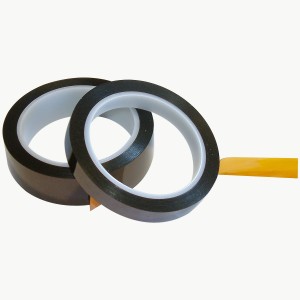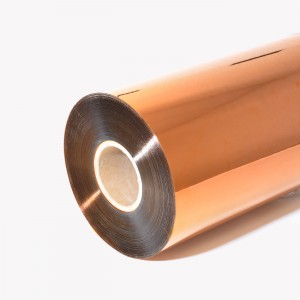Fourth, the application of polyimide:
Due to the characteristics of the above-mentioned polyimide in performance and synthetic chemistry, it is difficult to find such a wide range of applications as polyimide among many polymers, and it shows extremely outstanding performance in every aspect. .
1. Film: It is one of the earliest products of polyimide, which is used for slot insulation of motors and wrapping materials for cables. The main products are DuPont Kapton, Ube Industries’ Upilex series and Zhongyuan Apical. Transparent polyimide films serve as flexible solar cell substrates.
2. Coating: used as insulating varnish for electromagnetic wire, or used as high temperature resistant coating.
3. Advanced composite materials: used in aerospace, aircraft and rocket components. It is one of the most high temperature resistant structural materials. For example, the U.S. supersonic airliner program is designed with a speed of 2.4M, a surface temperature of 177°C during flight, and a required service life of 60,000h. According to reports, 50% of the structural materials have been determined to use thermoplastic polyimide as the matrix resin. Carbon fiber reinforced composite materials, the amount of each aircraft is about 30t.
4. Fiber: The modulus of elasticity is second only to carbon fiber. It is used as a filter material for high-temperature media and radioactive substances, as well as bulletproof and fireproof fabrics.
5. Foam plastic: used as high temperature resistant heat insulation material.
6. Engineering plastics: There are thermosetting and thermoplastic types. Thermoplastic types can be molded or injection molded or transfer molded. Mainly used for self-lubrication, sealing, insulation and structural materials. Guangcheng polyimide materials have begun to be applied to mechanical parts such as compressor rotary vanes, piston rings and special pump seals.
7. Adhesive: used as high temperature structural adhesive. Guangcheng polyimide adhesive has been produced as a high-insulation potting compound for electronic components.
8. Separation membrane: used for the separation of various gas pairs, such as hydrogen/nitrogen, nitrogen/oxygen, carbon dioxide/nitrogen or methane, etc., to remove moisture from air hydrocarbon feed gas and alcohols. It can also be used as pervaporation membrane and ultrafiltration membrane. Due to the heat resistance and organic solvent resistance of polyimide, it is of special significance in the separation of organic gases and liquids.
9. Photoresist: There are negative and positive resists, and the resolution can reach submicron level. It can be used in color filter film in combination with pigments or dyes, which can greatly simplify the processing procedure.
10. Application in microelectronic devices: as a dielectric layer for interlayer insulation, as a buffer layer to reduce stress and improve yield. As a protective layer, it can reduce the influence of the environment on the device, and can also shield the a-particles, reducing or eliminating the soft error (softerror) of the device.
11. Alignment agent for liquid crystal display: Polyimide plays a very important role in the alignment agent material of TN-LCD, SHN-LCD, TFT-CD and future ferroelectric liquid crystal display.
12. Electro-optic materials: used as passive or active waveguide materials, optical switch materials, etc. Fluorine-containing polyimide is transparent in the communication wavelength range, and using polyimide as a chromophore matrix can improve the performance of the material. stability.
To sum up, it is not difficult to see why polyimide can stand out from the numerous aromatic heterocyclic polymers that appeared in the 1960s and 1970s, and finally become an important class of polymer materials.

5. Outlook:
As a promising polymer material, polyimide has been fully recognized, and its application in insulating materials and structural materials is constantly expanding. In terms of functional materials, it is emerging, and its potential is still being explored. However, after 40 years of development, it has not yet become a larger variety. The main reason is that the cost is still too high compared with other polymers. Therefore, one of the main directions of polyimide research in the future should still be to find ways to reduce costs in monomer synthesis and polymerization methods.
1. Synthesis of monomers: The monomers of polyimide are dianhydride (tetraacid) and diamine. The synthesis method of diamine is relatively mature, and many diamines are also commercially available. Dianhydride is a relatively special monomer, which is mainly used in the synthesis of polyimide except for the curing agent of epoxy resin. Pyromellitic dianhydride and trimellitic anhydride can be obtained by one-step gas phase and liquid phase oxidation of durene and trimethylene extracted from heavy aromatic oil, a product of petroleum refining. Other important dianhydrides, such as benzophenone dianhydride, biphenyl dianhydride, diphenyl ether dianhydride, hexafluorodianhydride, etc., have been synthesized by various methods, but the cost is very expensive. ten thousand yuan. Developed by Changchun Institute of Applied Chemistry, Chinese Academy of Sciences, high-purity 4-chlorophthalic anhydride and 3-chlorophthalic anhydride can be obtained from o-xylene chlorination, oxidation and isomerization separation. Using these two compounds as raw materials can synthesize a Series dianhydrides, with great potential for cost reduction, are a valuable synthetic route.
2. Polymerization process: The currently used two-step method and one-step polycondensation process all use high-boiling solvents. The price of aprotic polar solvents is relatively high, and it is difficult to remove them. Finally, high-temperature treatment is required. The PMR method uses an inexpensive alcohol solvent. Thermoplastic polyimide can also be polymerized and granulated directly in the extruder with dianhydride and diamine, no solvent is needed, and the efficiency can be greatly improved. It is the most economical synthesis route to obtain polyimide by directly polymerizing chlorophthalic anhydride with diamine, bisphenol, sodium sulfide or elemental sulfur without going through dianhydride.
3. Processing: The application of polyimide is so wide, and there are various requirements for processing, such as high uniformity of film formation, spinning, vapor deposition, sub-micron photolithography, deep straight wall engraving Etching, large-area, large-volume molding, ion implantation, laser precision processing, nano-scale hybrid technology, etc. have opened up a broad world for the application of polyimide.
With the further improvement of the processing technology of synthesis technology and the substantial reduction of cost, as well as its superior mechanical properties and electrical insulation properties, thermoplastic polyimide will definitely play a more prominent role in the field of materials in the future. And thermoplastic polyimide is more optimistic because of its good processability.

6. Conclusion:
Several important factors for the slow development of polyimide:
1. Preparation of raw materials for polyimide production: the purity of pyromellitic dianhydride is not enough.
2. The raw material of pyromellitic dianhydride, that is, the output of durene is limited. International output: 60,000 tons/year, domestic output: 5,000 tons/year.
3. The production cost of pyromellitic dianhydride is too high. In the world, about 1.2-1.4 tons of durene produces 1 ton of pyromellitic dianhydride, while the best manufacturers in my country currently produce about 2.0-2.25 tons of durene. tons, only Changshu Federal Chemical Co., Ltd. reached 1.6 tons/ton.
4. The production scale of polyimide is too small to form an industry, and the side reactions of polyimide are many and complicated.
5. Most domestic enterprises have traditional demand awareness, which limits the application area to a certain range. They habitually use foreign products first or see foreign products before looking for them in China. The needs of each enterprise come from the needs of the downstream customers of the enterprise, information feedback and information; the source channels are not smooth, there are many intermediate links, and the amount of correct information is out of shape.
Post time: Feb-13-2023
